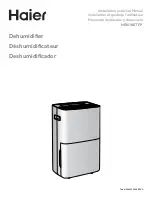
Note: A setting of “999” in this position will disable single phasing and
voltage unbalance protection.
Percent Unbalance =
Maximum Deviation from the Average
Average
x 100
Example: The measured line-to-line voltages are 203, 210, and 212.
Average =
569
+
572
+
578
3
=
57
3
The maximum deviation from the average is the largest difference
between the average voltage (
573
) and any one voltage reading.
573
-
569
=
4 573
-
572
= 1
578
-
573
=
5
The maximum deviation from the average is 5.
5
57
3
x 100 =
0
.
87
% Unbalance
MULT-
“MULT” is the multiplication factor for determining true current settings
based on current transformer ratio of external CTs. The appropriate
number can be determined from Table No. 1 on page 2. “MULT” must be
correctly programmed in order to accurately program the current settings.
OC-
Represents the manufacturer’s maximum Service Factor Amperage (SFA).
The “OC” (overcurrent) setting depends on many factors such as motor
usage, motor size, environmental factors and tolerance of the motor. The
motor manufacturer should be consulted for “OC” settings. However, “OC”
is typically between 110% and 125% of Full Load Amperage (FLA).
UC-
The “UC” (undercurrent) setting is typically set to 80% of full load
amperage (FLA). The overload relay with a “UC” setting of 80% of FLA
will typically detect a loss of load for many pumps and motors such as
a dry well condition for submersible pumps. The “UC” setting may be set
to 0.00 to disable undercurrent (loss of load) protection.
CUB-
“CUB” is the current unbalance trip point. Most motor manufacturers
recommend operating under no more than 5% current unbalance,
therefore, a setting of “5” is a good place to start. However, your motor
manufacturer should be contacted for exact settings.
Note: Current unbalance is calculated the same way as voltage unbalance.
Note: A setting of “999” in this position will eliminate single phasing and
current unbalance protection.
TC-
“TC” designates the trip class for overload protection. The trip class
defines the trip delay when an overload is detected. Trip class is
determined by the type of motor and application. Your motor manufacturer
should be consulted for the proper setting. Table No. 2 on page 9 shows
the trip class and a general description of the applications.
07/25/03
-6-






































